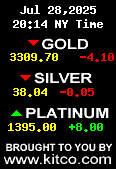Aug 09


| The Portuguese explorer, Vasco da Gama first visited India in 1498. For the next hundred years, Portugal had control over a number of islands in India and they enjoyed their monopoly on trade. After the arrival of the British, Portuguese power started declining. Thus, the Portuguese were the first ones who wanted to establish their territorial dominion in India. Until the mid 19th century, Goa, Daman and Diu issued their own coins. Goa issued coins comprising of copper, silver and gold. In 1869, the British closed down the Goa coin mint and soon after that in 1871, coins started being imported from Portugal. This new coinage had coins in many denominations consisting of the 3, 5, 10, 15 reis, half and one tanga. Then, in 1881, the copper and silver coins were introduced. The Portuguese India 1881 one (Uma) Rupia was among one of the coins introduced at that time. This is a silver coin weighing approx. 11.66 grams. This coin was issued in two years 1881 and 1882 with the bare head of King Ludovicus I on the obverse of the coin. Other than the Uma Rupia (1 Rupee) coin, there were other denominations like the Meia Rupia (1/2 Rupee), Quarto De Rupia (1/4th Rupee) and Oitavo De Rupia (1/8th Rupee) issued with the bare head of King Ludovicus I. The Rupee and half rupee was issued in 1881 and 1882, whereas the quarter rupee and one-eighth rupee were issued only in 1881. To know more about this coin you can refer page number 268 KM # 289 of “The Standard Guide to South Asian coins and Paper Moneyâ€. Until 1958, Rupia was the currency of Portuguese India. Soon, after that the decimal coinage was introduced. “Centavos and Escudo†came into existence but were active only for 3 – 4 years. By 1961, Portuguese power came to an end. |



